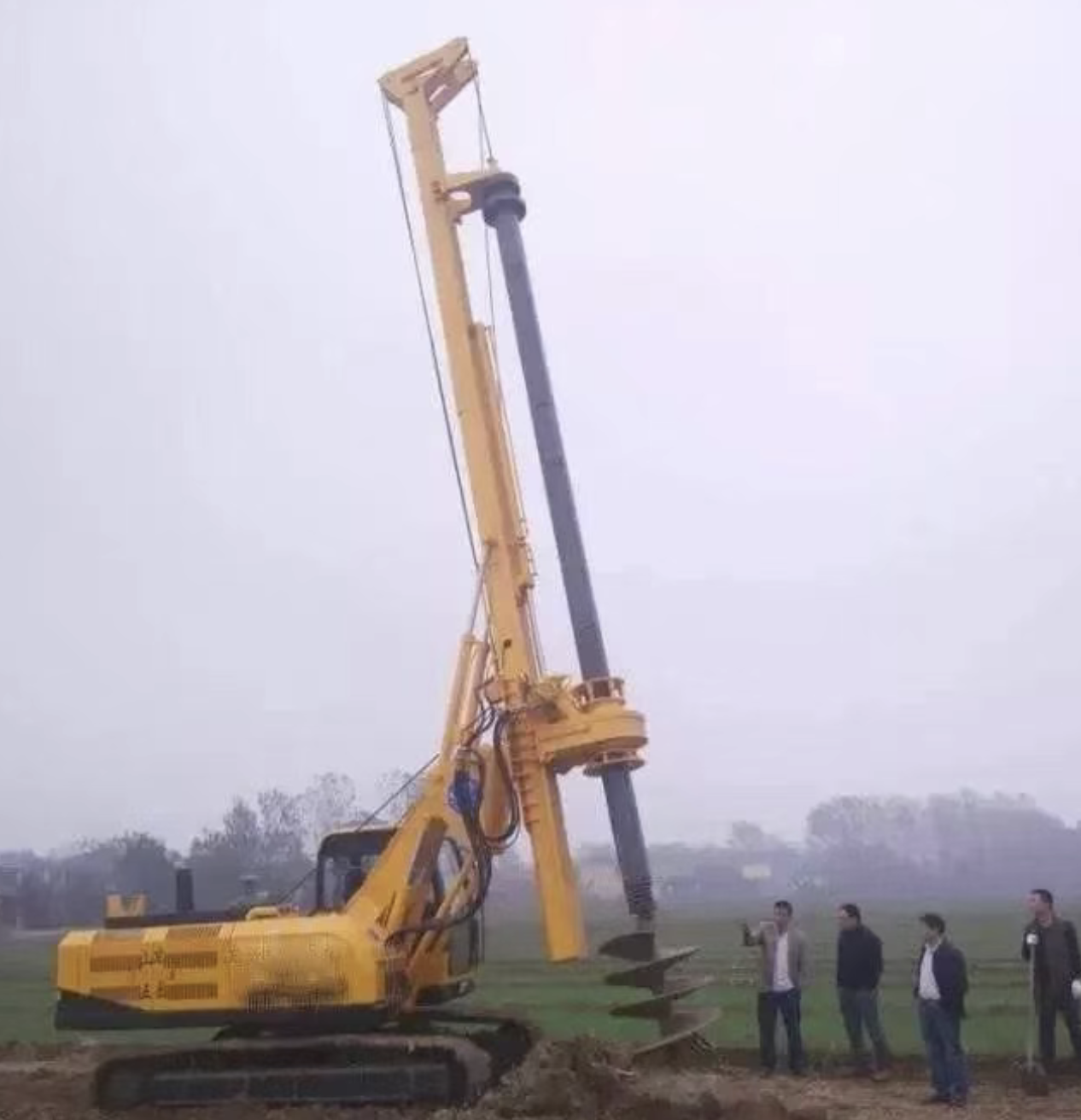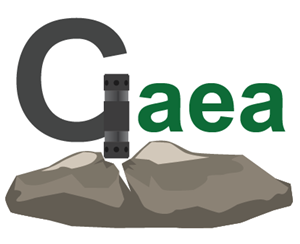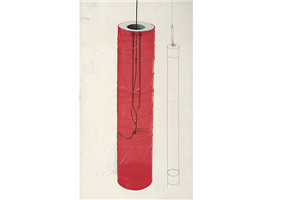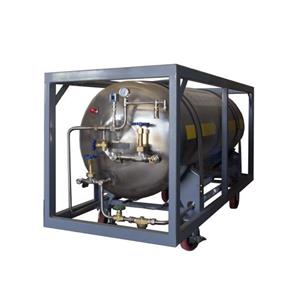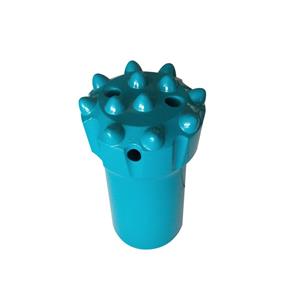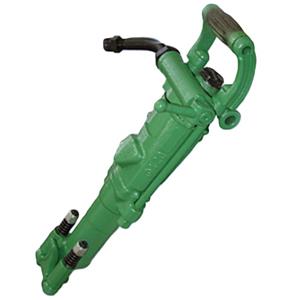Five common rotary drilling rig faults and their repair methods
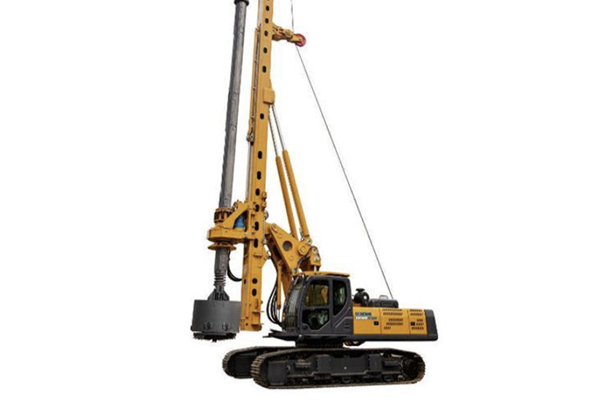
Rotary head (power head) torque insufficient Fault symptoms: During drilling, the rotary head produces insufficient torque; both forward and reverse rotation speeds are low; the rotary head motor and gearbox emit abnormal noises during operation. Fault analysis: Insufficient torque can be caused by hydraulic or mechanical issues: 1) low hydraulic oil pressure in the hydraulic system; 2) faults in the rotary head motor, gearbox, or the transmission (reducer). Possible causes:
Pilot pressure too low or relief valve setpoint too low;
Damage to the rotary head motor or excessive hydraulic leakage;
Damage to gearbox/reducer internal components;
Mechanical failure in the rotary head gearbox assembly.
Troubleshooting:
Check the hydraulic main system pressure. If main system pressure is normal, suspect mechanical damage.
During hydraulic checks, observe that the reducer and motor make a small periodic noise while running. Remove and inspect the rotary head motor and output shaft — these parts were found normal.
Remove and disassemble the reducer. Note: keep the disassembly area clean and follow correct disassembly order for reassembly. Carefully inspect the reducer internals — gear damage was found. Keep the component order, clean bolts, washers and parts during disassembly, and keep the reducer interior clean during reassembly.
Replace the damaged gears, reinstall the reducer and motor, restore the rotary head — the rig returned to normal operation. Lessons learned: Mechanical damage in the rotary head reducer will reduce output torque and usually produce abnormal noise. Early detection and repair are essential to prevent the damage from worsening.
Rope clamp (wire‑rope pressing device) will not rotate Fault symptoms: The rope clamp is jammed and cannot rotate; the wire rope is severely worn. Fault analysis: A non‑rotating rope clamp and severe wire rope wear are typically caused by insufficient maintenance — lack of lubrication inside the clamp makes rotation sticky or deformed, may damage internal bearings, cause jamming, and accelerate wire rope abrasion. Possible causes:
Insufficient lubrication inside the rope clamp;
Deformation of the rope clamp;
Internal bearing damage causing seizure. Troubleshooting:
Field inspection: the clamp is not deformed but surface wear is severe.
Disassemble the clamp and find insufficient lubricant inside.
Further disassembly reveals damaged internal bearings that prevent rotation.
Replace the internal bearings, reassemble the clamp, add lubricant — fault cleared.
Mast cylinder leaking; mast not vertical Fault symptoms: Mast hydraulic cylinder leaks oil; the mast is not vertical. Fault analysis: Cylinder leakage may be caused by piston rod head fracture or damaged cylinder seals. Mast out‑of‑plumb (not vertical) can be caused by cylinder internal leakage or balance valve internal leakage. Possible causes:
Fracture of the mast piston joint/head;
Damage to mast hydraulic cylinder seals;
Internal leakage in the balance valve. Troubleshooting:
Inspect and find cracks in the cylinder piston joint/head. Further inspection of the mast cylinder reveals visible spots and shallow grooves on the rod surface.
Open the cylinder and seals; seals and O‑rings are damaged and washers show cracking, causing leakage.
Replace seals, O‑rings and washers, reassemble the cylinder. Test shows no leakage; the rig returns to normal. Lessons learned: Improper operation can cause the main winch wire rope to contact the piston rod surface, producing grooves and damaging seals which leads to leakage. Mast cylinder leakage causes mast tilt, asynchronous mast raise/lower, etc. Address leakage promptly to prevent escalation.
Mast tilts during raising or lowering (mast out‑of‑sync) Fault symptoms: Mast tilts during erection or lowering; mast cylinder actions are not synchronized. Fault analysis: Mast unsynchronization may be caused by inconsistent opening of the electro‑proportional valves during raising/lowering. If adjusting electrical current does not improve the condition, consider balance valve faults. If the balance valve is not stuck and adjusting spool opening makes no improvement, then cylinder internal leakage is likely. Possible causes:
Electro‑proportional valves for raising/lowering open inconsistently;
Balance valve faults in the mast cylinders;
Damaged cylinder seals causing internal leakage. Troubleshooting:
Power on, enter display settings and set electro‑proportional valve currents to 950 mA and 850 mA. After adjustment the mast raise/lower speed slowed notably but the tilt persisted, indicating the issue is not purely electrical current related.
Disassemble and clean the balance valve. No sticking is found; adjusting the valve opening produced no obvious improvement.
Remove and open the cylinder, and find damaged seals. Replace the piston seals; after reassembly the mast raises and lowers without noticeable tilt — fault cleared. Lessons learned: When diagnosing mast tilt, check in this order: 1) electrical system (proportional valve control), 2) hydraulic circuit (pressure and flow), 3) balance valve and cylinder (balance valve leakage or cylinder seal failure causing internal leakage).
Rotary (slewing) vibration / shudder Fault symptoms: On an SR220 rotary drilling rig with total running time of 8,793 hours: with the engine at position 1 the rig exhibits severe rotary vibration during rotation; at position 10 there is light vibration. Main pump 1 pressure fluctuates greatly. During no‑load tests of other functions: when pump 1 supplies hydraulic oil its pressure oscillates; when only main pump 2 supplies oil, operation is normal. Fault analysis: Rotary vibration during rotation is generally caused by fluctuation in the main rotary pressure, producing intermittent rotary output and resulting vibration. Possible causes:
Fault in the rotary pilot (control) oil circuit;
Unstable operation of the rotary relay/solenoid;
Damage to the rotary motor;
Main pump failure. Troubleshooting:
Check pilot oil circuit pressure — pressures were abnormal. At position 1 pilot pressure is 19 bar; at position 10 pilot pressure reaches 38 bar and is relatively stable, so pilot circuit fault and rotary relay fault were excluded.
If the rotary motor were damaged, other functions would not be affected the same way. Other actions cause main pressure changes, so rotary motor failure was excluded.
Based on symptoms and measurements, conclude main pump and pilot pump damage. Replace the main pump and pilot pump — the rig then operated normally. Lessons learned: Replacing the main pump and pilot pump restored normal operation.
